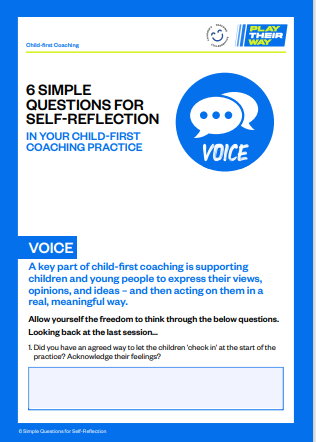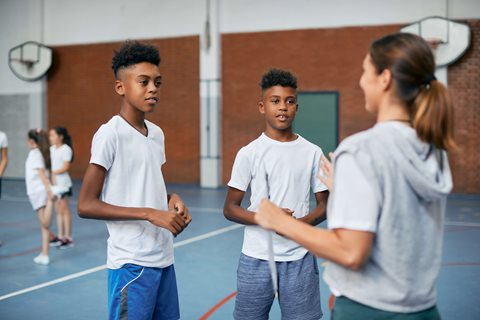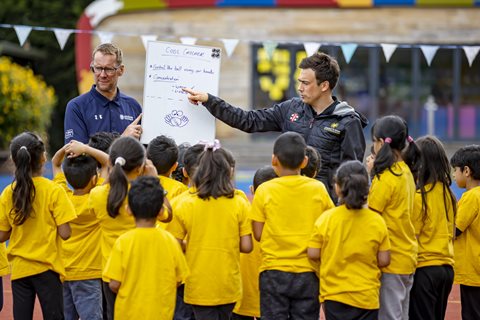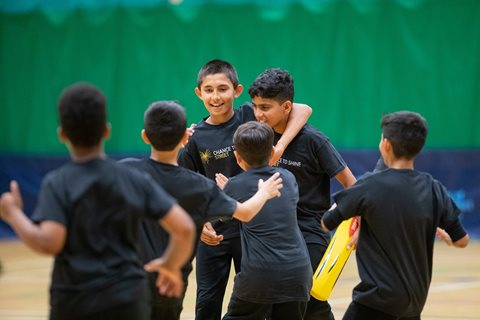Our cookies
We use essential cookies to make our website work smoothly for you. To make sure we're always improving, we'd like to use analytics to track how people use the site. We won't set non-essential cookies unless you give us permission. You can find more information about all the cookies we use in our Privacy and Cookie Policy.
Some cookies are a must for our website to function properly. If you turn off essential cookies, it may affect how you experience our site.
The non-essential cookies we use help us understand how you use our website and make improvements to enhance your experience.
Bowled Over: A Guide to Coaching Cricket to Children
Cara Biggin-Evans, a girls cricket coach at Banstead Cricket Club talks about the importance of getting to know the players so they get the most out of each session.
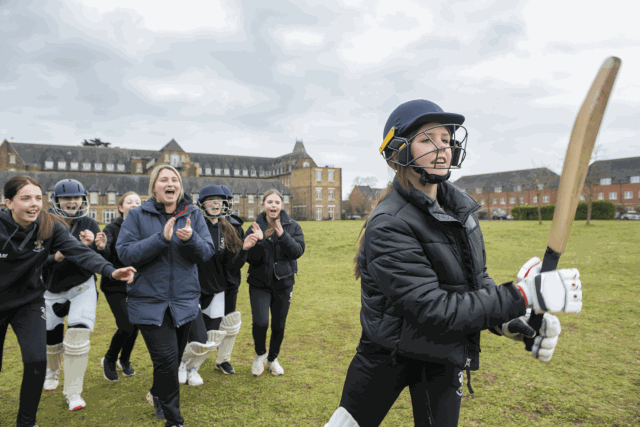
by Carrie Dunn
"It's not my game. It's not the manager's game. It's not your mum and dad's game. It's your game."
We can give you all the foundations - your tool belt - but at the end of the day, we can't walk out on that pitch. This is your time. I've had my time - it's now your time to be a better bowler, or take that catch.”
After years playing cricket Cara Biggin-Evans wanted to give something back to her club. She started coaching at Banstead Cricket Club at the age of 14 and has never looked back.
“The club do a young leaders' programme, and it's more structured now compared to 17 years ago," she says. "If you're coaching from the age of 14, the development of your game will improve. A lot of girls now are taking a young leadership role from this year and working towards their coaching badges.”
Biggin-Evans set up the Banstead girls' section five years ago, and her child-centred philosophy guides its teams and training sessions.
Challenge Yourself - Voice
Here are some small steps you can take to make sure you hear what young people have to say in your sessions.
DOWNLOAD NOW
Having fun and keeping up with the little ones
Novice coaches might be wary of trying out cricket skills with the littler ones, because of the motor skills required. Cara says to start with a big ball (and one that isn't as hard as the traditional cricket ball) and of course smaller, lighter, wider bats intended for children's cricket practice.
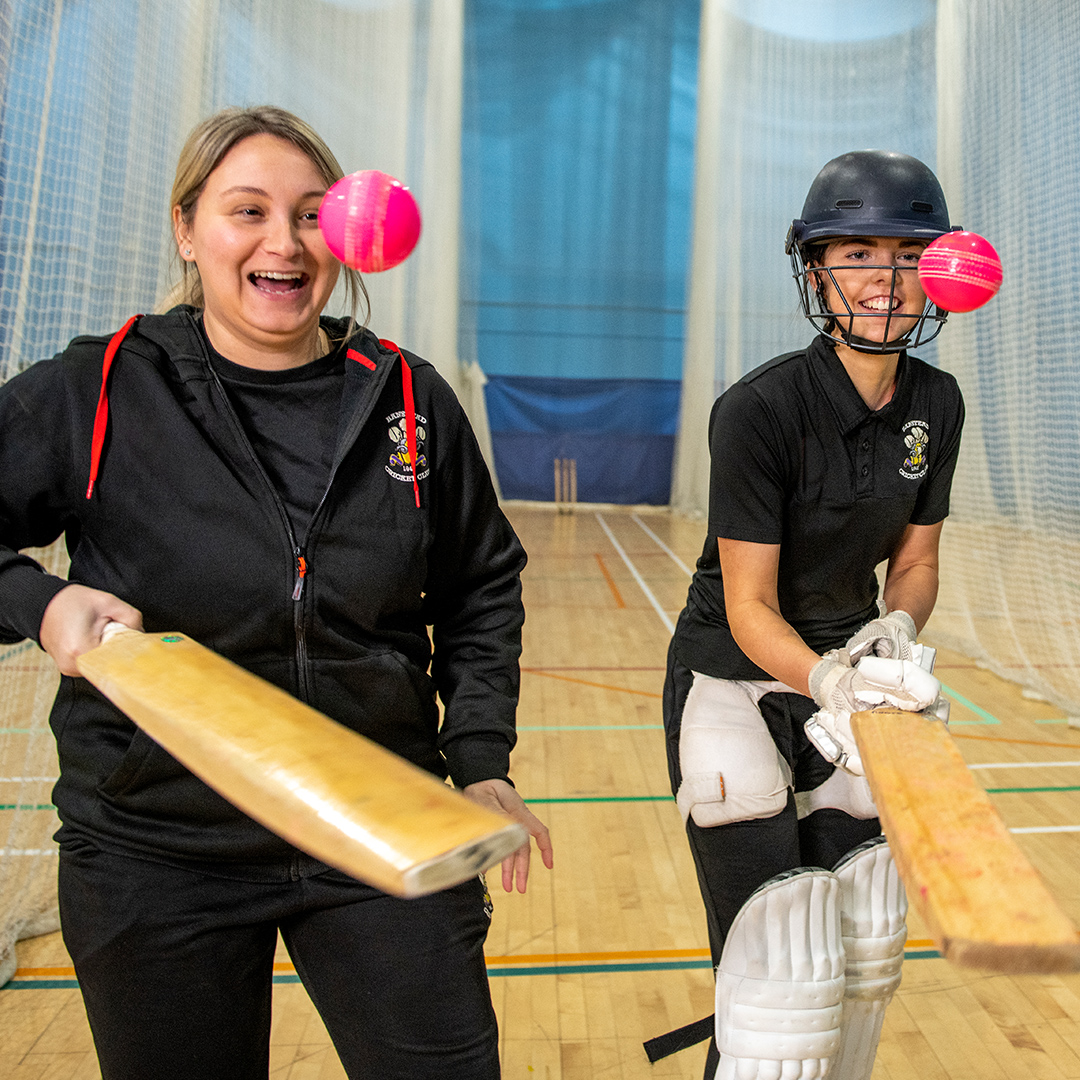
"The best thing to do is always start with batting, because kids love hitting a ball," she says, suggesting that with little ones, make the activities short and sharp and rotate through to bowling and fielding too. "If you don't get through something, or they're just having the best time and you're going to want this to carry on, tell them, 'We're going to be really cheeky this week, and we're going to actually get back to the batting!'
“That's where I'm always saying just bounce through everything, and then children get the variety they need, and then you get to see what you need as well. As they go through, they'll make their own decisions on what they want to do.”
As a warm-up, Cara suggests games where players use their bats to hit cones over rather than balls, to make sure their hands are ready for the rest of the session. She also says that coaches shouldn't underestimate younger children.
“It's amazing, when you ask a five-year-old to try and bowl a ball, how quickly they can pick it up - but with a bigger ball. Because their hands are so small, they have to keep their arms straight - as soon as they bend there, that's when the ball goes to the floor. So you can work out different ways to practise that with them, and use different equipment to help [with] that.”
Cara recommends having parents on hand for sessions with the very little ones - and warns with a grin that you'll need plenty of energy to join in all the hilarity.
You've got to think, For the next 45 minutes, I get to be a five-year-old - I get to run around, chuck a ball around, and have a bit of fun in a field!"
Cara Biggin-Evans, Lead Coach at Banstead Cricket Club
Get to know your players
For ages six and upwards, a coach might bring in a bit more structure, but there should still be an emphasis on fun and what the group enjoys.
“They love a cartwheel!" says Cara. "So we then introduced: 'OK, after you've taken a catch, you can do a cartwheel - or if you take ten catches, you can do ten cartwheels.'”
And everyone can join in with a quick cartwheel competition during a ten-minute break, meaning everyone gets the chance to do a different kind of physical activity.
“You won't need that for some children, but some will, and you judge it on that. As they grow up, their heads get more engaged.”
For older ones who are playing in a team, their input is just as important, even if it's gathered in a different way.
“Talk to the batters, ask what they're doing - talk to the bowlers, ask how they're bowling or how they're doing with the technical side of the bowling," says Cara, who suggests using time at training sessions to have a more casual conversation with players and listen to what they want and how they are feeling. "You've also got an opportunity to stand and have a chat to the girls and see how their week's going, because when you get to the age of, say, 14, there's a lot of stuff going on.
“It's nice to have that one-on-one time: we can chat to them and have a nice conversation, but then you can also say, 'Hey, how'd you feel on this part of cricket?' and then I can go back to my coaches and say, 'Someone mentioned this. Let's see if we can implement that somewhere.'”
Tips for coaches
Cara has two big tips for coaches - and regardless of what sport you coach, they can be useful.
First, get to know your players.
"Understand who they are, what they want out of the sessions, and then you can go from there," she says. For example, older or more experienced cricketers might want to work on understanding fielding positions, or a particular bowling technique, so creating an environment for them to express their wishes is important.
And second, make sure that everyone has fun - including you.
You don't know who's going to walk on to your field. You don't know what their day's been like. So if you set out a session, and it's not going well, don't be afraid to adapt it."
Cara Biggin-Evans, Lead Coach at Banstead Cricket Club
Don't be afraid to be like, 'OK, this isn't really working,' and then ask them whether you should scrap it and move on to something else. Be very open. If you're stuck to structures, I think you get to a point where you panic, and then your anxiety sets in and then it will go badly.
“These are children, they're not adults. They've been at school all week, all day. It's a long day. Just relax! They're there to have fun and if you're not having fun, it's never going to work!”
Other resources that you may like...
SHARE THE MOVEMENT
Help spread the word by sharing this website with fellow coaches!

